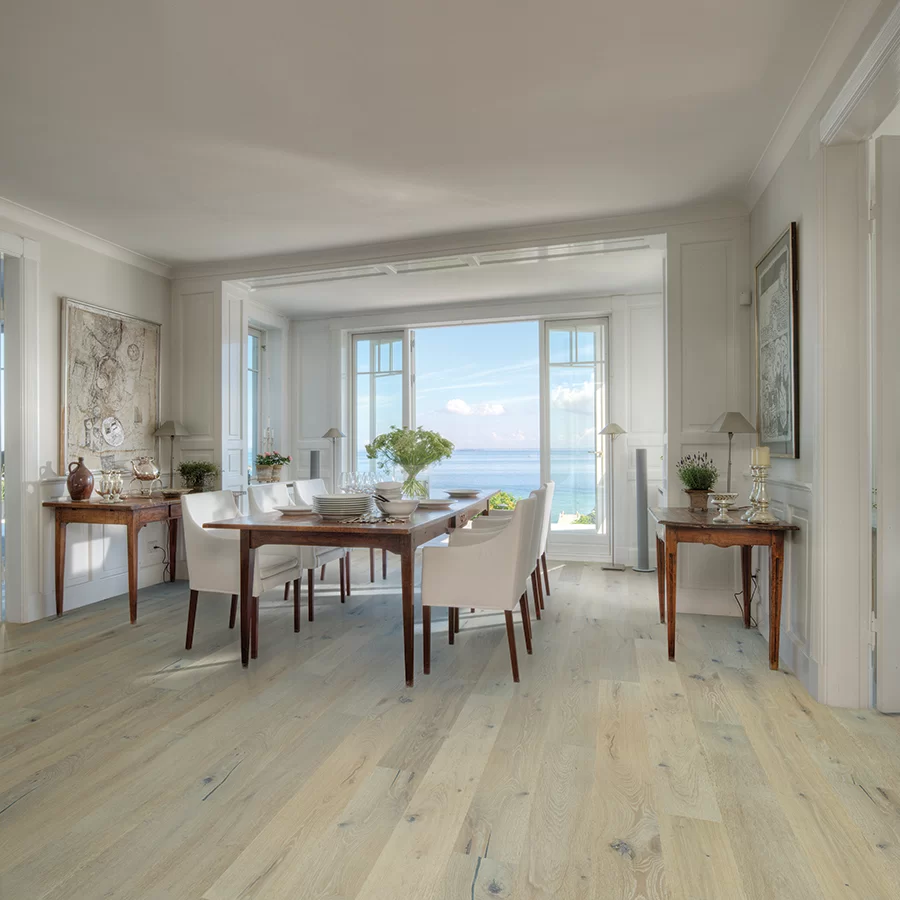The flooring industry in 2023 experienced various trends influenced by economic factors, market demands, and technological advancements. Here’s a detailed overview:
- Market Dynamics: The flooring industry in 2023 faced both highs and lows. The residential market encountered economic challenges, while commercial flooring saw mixed results. Institutional and hospitality segments remained busy, but corporate spaces experienced a downturn as companies adapted to hybrid work models.
- Sales Trends Among Categories: Significant changes were observed in flooring sales trends:
- Broadloom carpet remained steady at 31%.
- Rigid LVT (Luxury Vinyl Tile) increased from 17% to 26%.
- Hardwood flooring remained steady at 12%.
- Ceramic flooring dropped from 10% to 7%.
- Flexible LVT decreased from 11% to 5%.
- Carpet tile remained steady at 5%.
- Laminate flooring rose from 4% to 5%.
- Area rugs increased from 3% to 4%.
- Sheet vinyl declined from 5% to 3%.
- Overall Market Performance: Manufacturer sales of floor coverings in the U.S. declined sharply in the first half of 2023, primarily due to a drop in final demand and efforts to reduce excess inventories accumulated in 2022. The first half of 2023 saw a 6.9% decline in dollar sales and a 10.5% drop in square foot sales. However, a recovery was anticipated in the latter half of the year as inventory liquidation ended and the housing market stabilized.
- Commercial Sales and Economic Impact: Commercial flooring sales showed moderate growth, benefiting from increased spending in non-residential building construction. Consumer spending on floor coverings didn’t decline as sharply as manufacturer sales, thanks to factors like rising home values and steady increases in employment and personal income. However, purchases by builders put downward pressure on overall demand, with an estimated 20% decline in builder purchases in the first half of 2023.
- Supply Chain and Import Factors: Manufacturer sales were impacted by supply chain issues and the enforcement of the Uyghur Forced Labor Production Act, which led to a significant decline in imports from China, especially PVC-based flooring. As a result, U.S.-made floor coverings gained a larger market share, with an increase in sourcing from Mexico as well.
- Resilient Flooring: Despite overall market challenges, resilient flooring, which includes products like rigid core LVT, continued to gain market share. By mid-2023, resilient flooring accounted for 33.4% of total dollar sales and 40.7% of total square foot sales in the U.S. market. This growth reflected the sector’s significant advancements over the past decade.
- Future Outlook: The decline in demand for resilient and other floor coverings was expected to stabilize by the third quarter of 2023, supported by a leveling off in the decline of housing demand and strong commercial sales. Positive trends in multi-family housing starts and a slowdown in the decline of existing home sales further supported this outlook.
These trends reflect a complex interplay of economic, consumer, and industry-specific factors shaping the flooring market in 2023. The industry’s adaptability to changing market conditions and advancements in product offerings have played a significant role in navigating these challenges.

